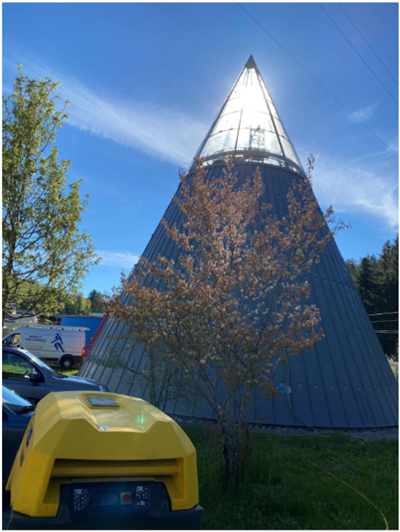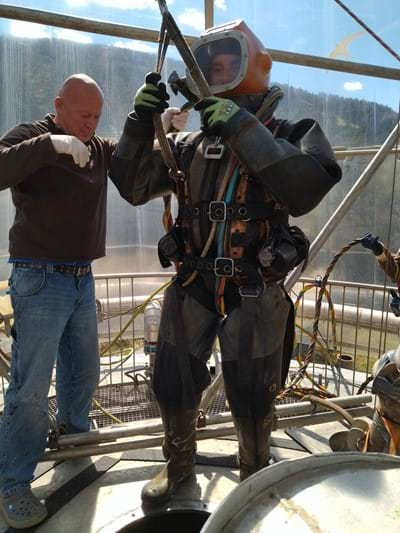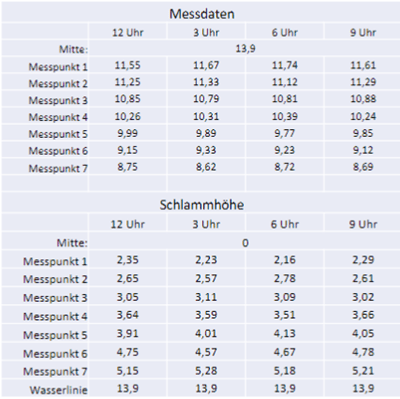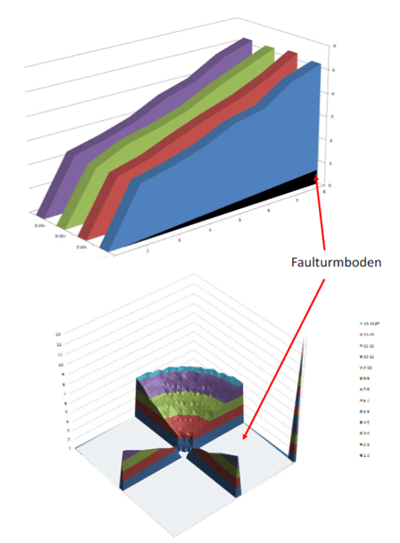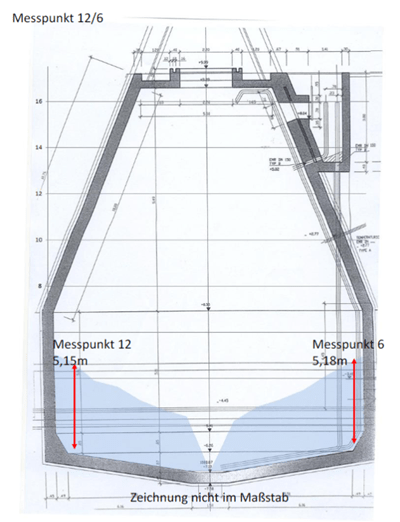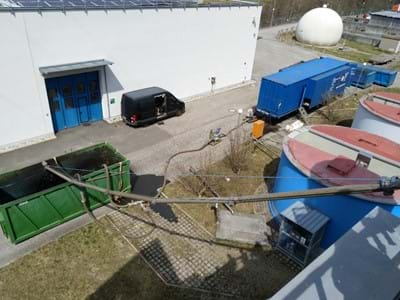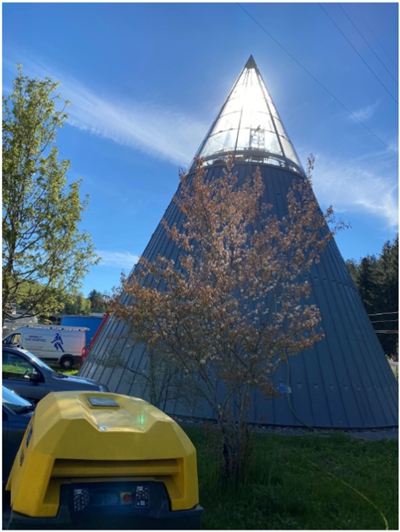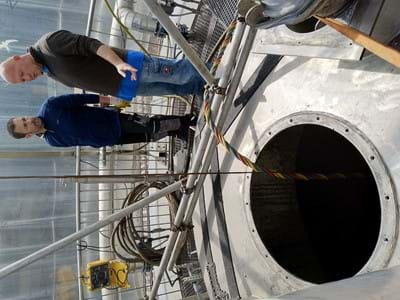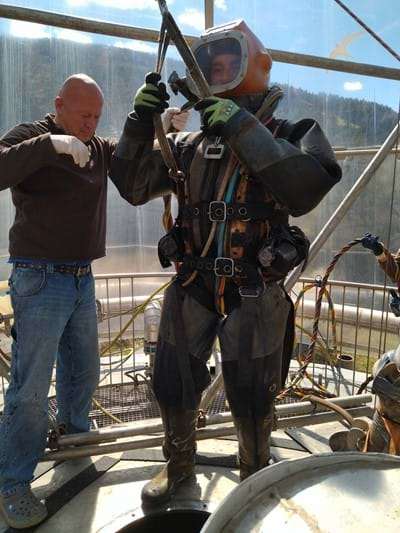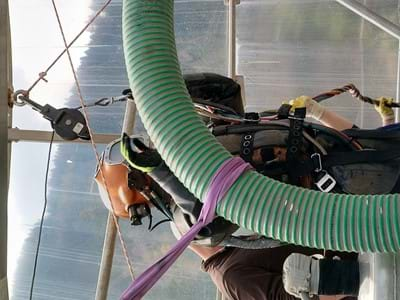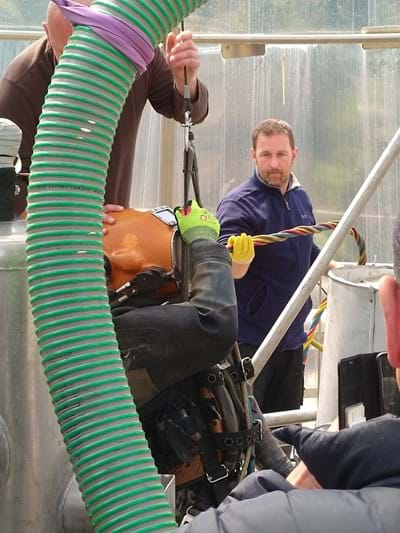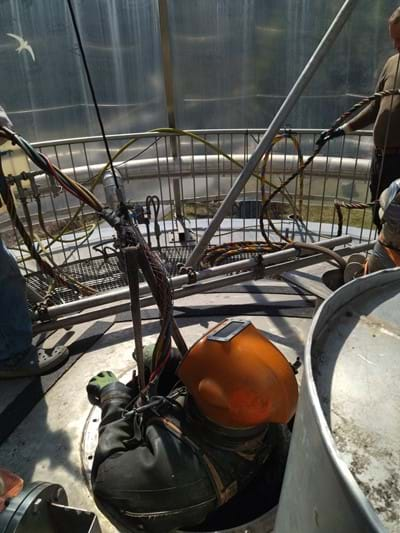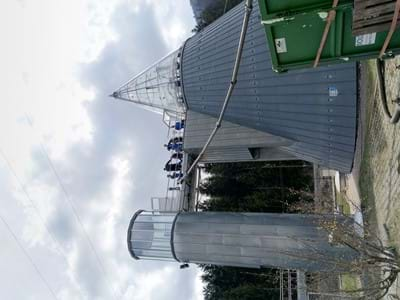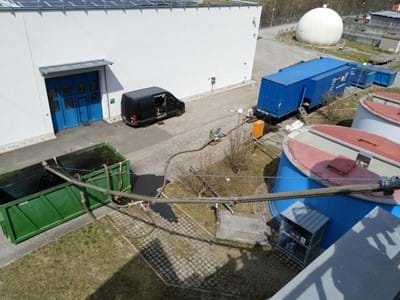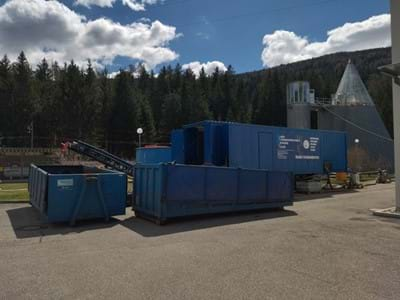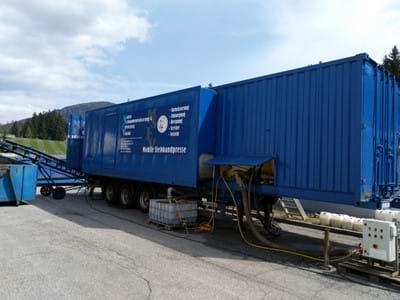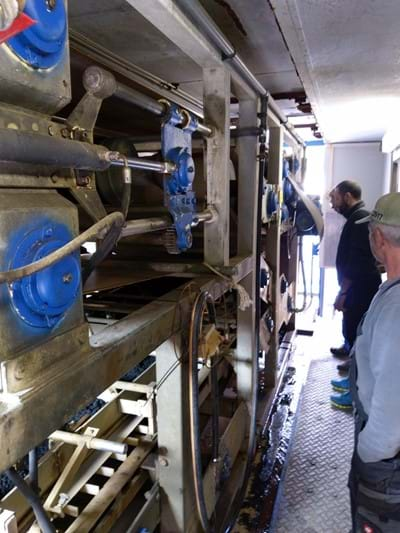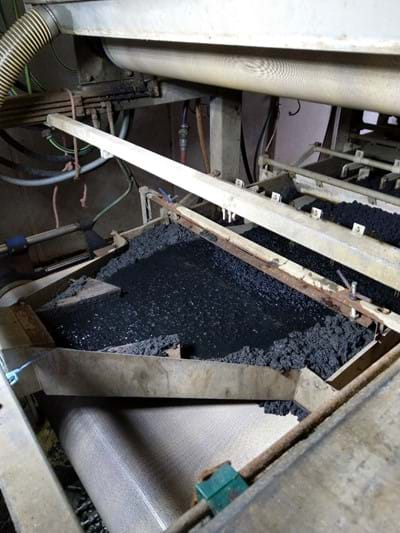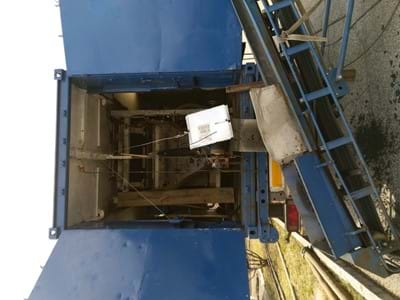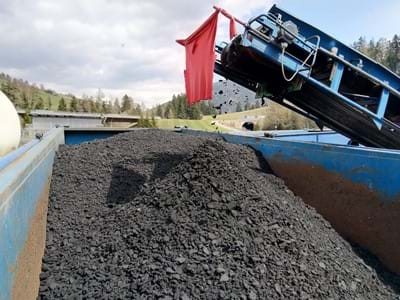Based on the results of the year 2021, the digestion tower was cleared of the detected deposits this year in April. This must be done so that the digestion process is not disturbed. Such a disturbance would have serious consequences for the operation of the plant and would cause immense costs. The digestion tower cannot simply be taken out of operation, since there is no second digestion tower at this plant that could take over the work in the meantime.
When industrial divers are used, however, the digestion tower can remain in operation. Likewise, the temperature does not have to be lowered below 37°C. Accumulating digested sludge can be added and recirculated at any time by arrangement. The old sludge was sucked off and immediately dewatered with a mobile sludge press.
A new start-up of the digestion tower, which would take 14-16 weeks, is therefore not necessary. The cogeneration units can be put back into operation just a few hours after the digestion cover has been closed. This means that electricity and heat can be produced again.
